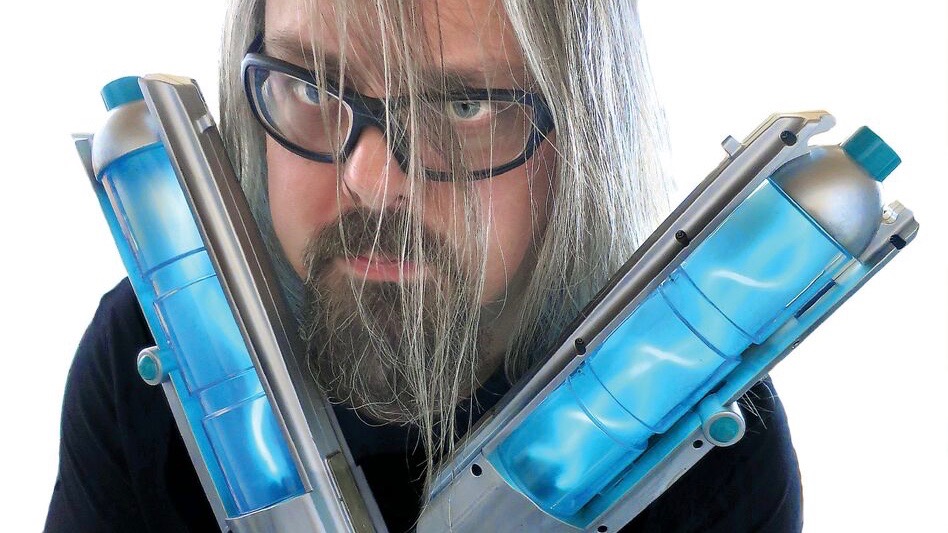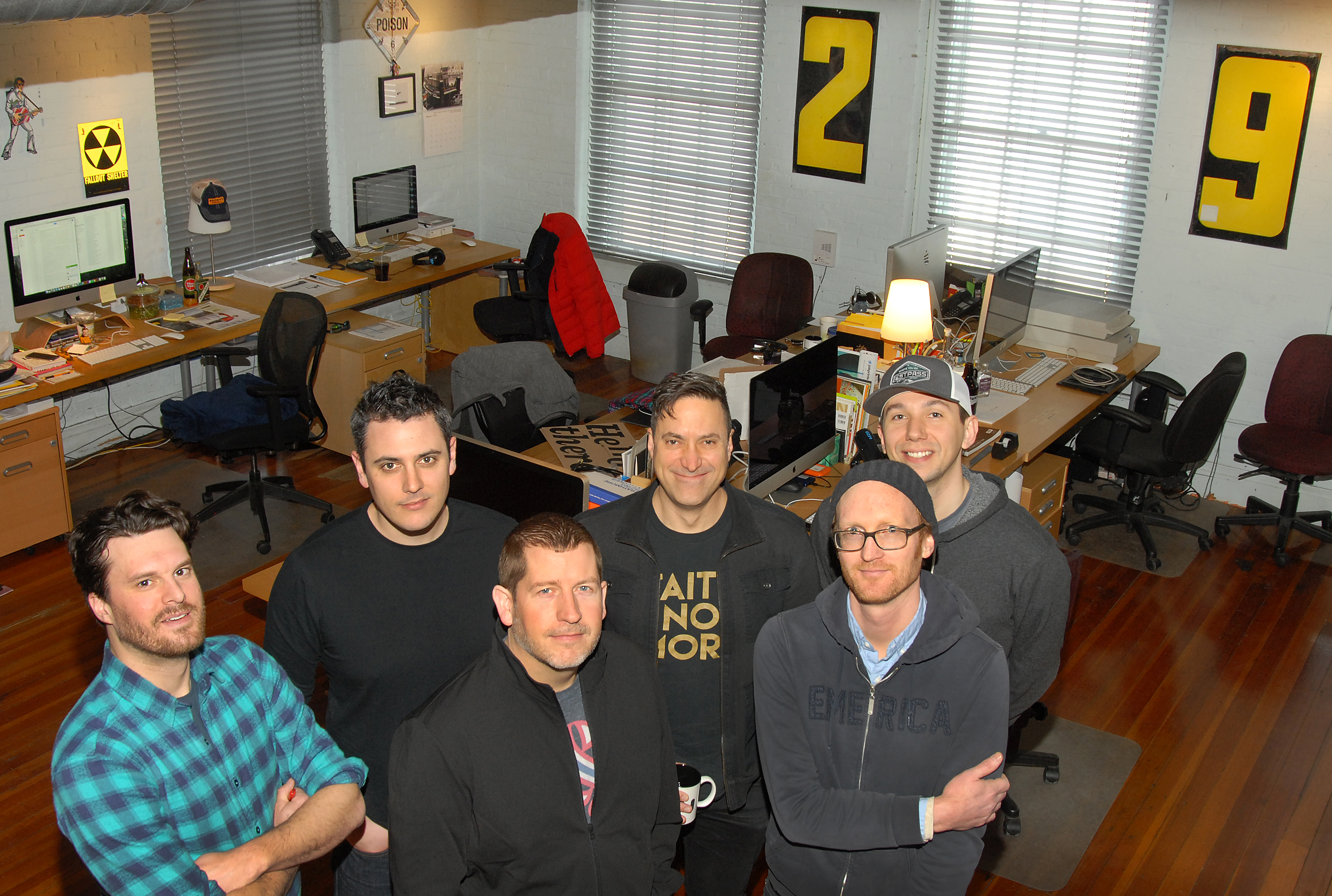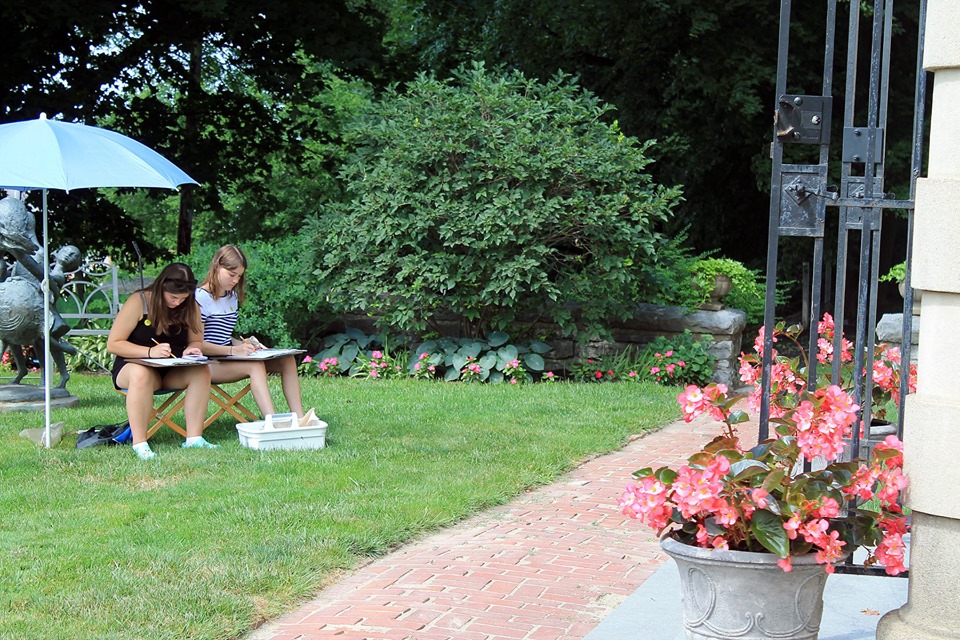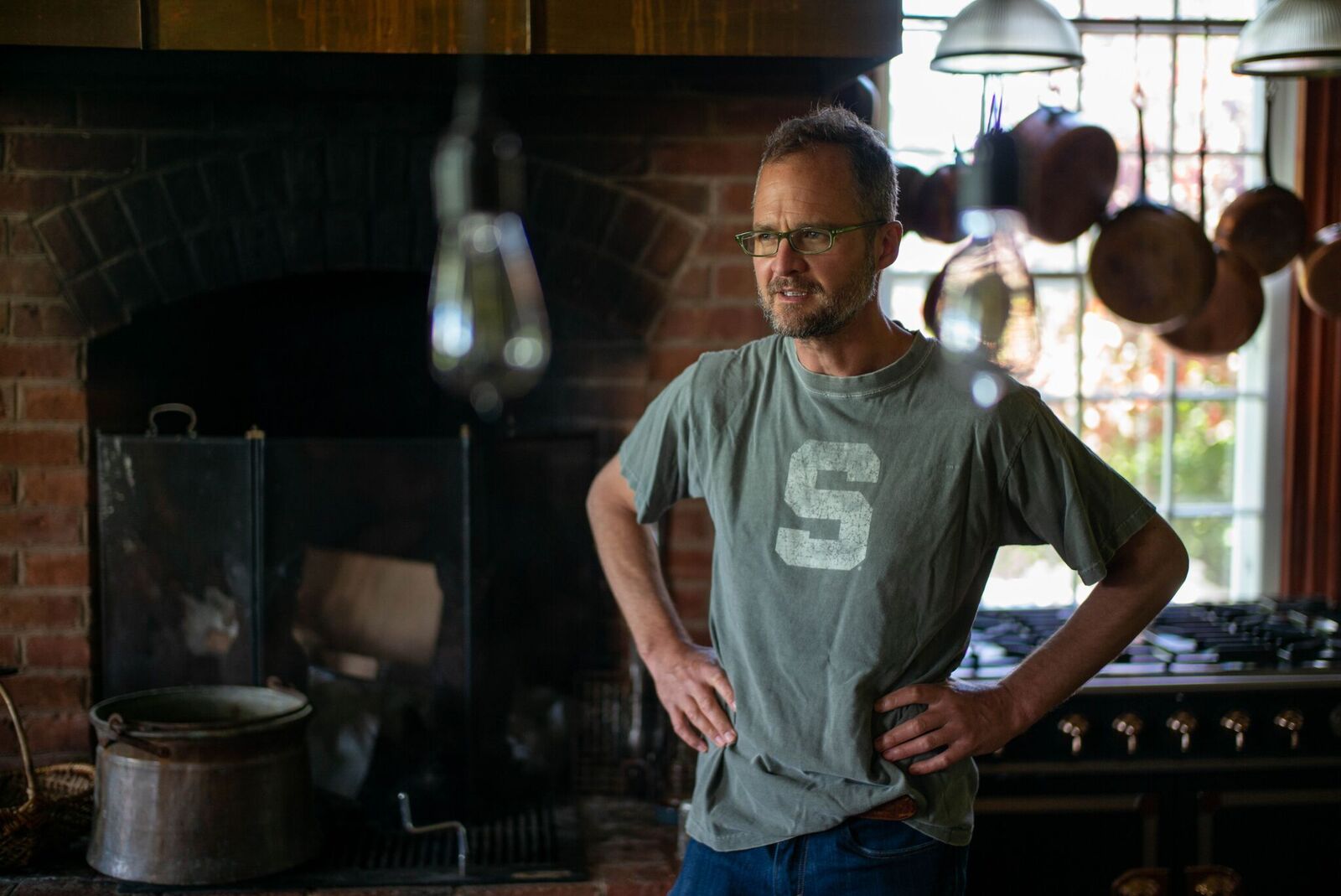This article first appeared in The Alt on February 13, 2017.
Photos by Leif Zurmuhlen
Westerlo’s rolling hills are white today. Blankets of snow have fallen since early this Sunday morning, obscuring and finally consuming the already inconspicuous road to FishCo Innovation. There’s a “Dead End” sign and a cobbled-together billboard warning the area is “Posted’. A few feet away rises a hump in the terrain with a set of rails that perhaps indicate there may be a bridge. Past that is more rolling white, monochrome and dazzling, blinding, like a desert. It seems that all that lies ahead is all that is here–more white, more cold. But that isn’t so. A few feet over the hill sits a minimalist house where a farmhouse might have once stood in its place. A nearby barn looks appropriately worn, but a simple wooden motif indicates more thought has been put into the place than farmers or carpenters would care to spend on a storage space for tools and animals.
This is the home and workshop of Fischo Innovation and its founder Troy Fischer, inventor, craftsman, toymaker. Built by Troy’s grandfather Jan Menting after the original home burned down in the ’80s, Fischer took up residence here with his family about two years ago after relocating from Brooklyn and Manhattan.
Fischer is relatively soft-spoken and humble. He looks like the kind of guy you might run into at a comic-book shop or at a metal show. With long grey hair covering his face, a pointy goatee at the tip of chin, he’s certainly someone you’d sit down for a beer with.
You may not know it, but if you have kids, you probably have one of Fischer’s inventions in your home. Projection technology he developed brings to life the expressions on the faces of of a line of toys featuring Lightning McQueen and Mater of Pixar’s Cars fame. It also animates the faces of the stars of Disney’s Tron motion picture on a series of action figures, and powers the Yo-Kai Watch–a Pokemon-like game that allows kids to collect cards and then project their abilities through a watch on to a nearby surface.
In the not-too-distant future the same patented “Impulse Projection” technology could be employed in children’s books, on the dashboards of cars or in ubiquitous household items like fire alarms.
If you’re an adult of a certain age it’s likely Fischer also influenced the toys of your childhood. He worked for Marvel Comics’ toy division for years, developing new mechanisms and concepts for action figure lines and working with the production house in Hong Kong.
He holds a patent for a mechanism used in a Spider-Man toy that allows a figure to be flung through the air from one point to another. At Marvel Toys, Fischer was involved in some of the most beloved lines created by the company, including Marvel Legends, a series of figures held up by collectors today as perhaps the pinnacle of action figure design. He functioned as an executive, bridging the gaps between inventors, creatives and production.
In 2007, flush with the success of their original Spider-Man film franchise, Marvel sold the rights to create toys based on its licenses to Hasbro. The toy division limped on, producing figures based on TNA Wrestling and Curious George until eventually folding in 2008. Fischer said he saw it as an opportunity, but at the same time the experience was humbling. Suddenly he was the guy from the outside pitching ideas to the big companies.
“They told us, ‘You’re not working for us anymore. Hasbro is going to do all the Marvel stuff,’ and they basically let go of our entire division,” said Fischer. “I thought ‘Great! I can get out of toys and do other stuff.” Fischer says he wound up at the New York City School of Visual Arts after realizing that his dream of building guitar pedals required an engineering degree. At the SVA, he says, he found out he wasn’t particularly great at drawing, painting or even sculpting. But he did complete projects–by creating mechanisms and employing lighting setups.

He figured he would return to his roots in some way and set out to build a night light.
“I came up with the idea of using individual LCDs and lighting up individual slides, so that you have a bundle of little slide projectors that could be timed with a voice. I wanted to employ it in a night light, and I knew people who had lighting licenses with Disney. I figured we could do some sort of cutting-edge night light.”
Things didn’t go as planned. He showed the technology to someone in the toy business. “‘They said can you put this in an action figure?’” recalls Fischer. “And I said ‘Why not?’”
The result was a line of Tron action figures featuring the animated faces of the film’s stars–a feat made possible by Fischer’s technology. He holds up one of the toys; a screen on the action figure’s head flashes like a small computer screen. Some dialogue pipes through a small speaker in the frame. “That’s Jeff Bridges,” Fischer chuckles.
Fischer’s home is rife with hardwood, hand-made furniture, artwork and toys. The second floor houses walls of built-in shelves with neatly organized books, many of them on history and graphic design.
The third floor opens up immediately into Fischer’s workshop. Plastic bins full of toy parts, components, mechanisms and scrap line the walls. Various drills, saws and other tools rest on counters around the sides of the room. Maker machines and printers sit at the ready. In the center of the room is a sturdy wooden table covered with some of Fischer’s latest creations. There’s a small figure of Muhammad Ali that Fischer’s altered, the face replaced with his projection technology. What was once a cute novelty toy feels alive and interactive. Various other small boxes feature projections Fischer has tinkered with. At the end of the room is a night-light prototype. “Never did get into the night-light business,” he laughs. Right next to it are the Cars toys that use his projection technology. He picks one up and it starts to talk. Its eyes dart left and right. He flicks a switch and the toy starts giving driving advice. “It even reacts when it runs into something,” Fischer says, bumping the front end of the car against his palm. The toy is finally quiet. “Might have taken it out because it was so annoying.” He grins.
On Thursday, Fischer will box up a number of his prototypes and catch a train bound for Toy Fair New York City. There he will meet with executives from toy companies from across the world and pitch his latest inventions. “I’ll build prototypes and a few times a year go visit Hasbro, Mattel or Fisher Price. I’ll build something and say, “Would this be something for The Fast and The Furious?’ or whatever.” When he returns from Toy Fair, Fischer will be busy tweaking and refining ideas based on recommendations and reactions from toy companies.
Fischer says things have changed drastically in the industry since he was sitting at the other side of the table taking proposals from inventors. Companies used to take pitches on a toy and work out the technology themselves. Nowadays, he says, if you’re pitching a toy that performs a certain way, you have to have already developed the mechanism to make it happen and reliably demonstrate that it works. Otherwise companies aren’t interested in taking the chance. “In the old days you’d do an illustration and show up with a portfolio in a suitcase and do a presentation. The company would approve and give you an advance. It doesn’t work that way anymore. They want to see the prototype and they’ll show it to a higher up or Wal-Mart and then they come back with a forecast for sales.”
Toy Fair has also changed drastically in the last decade. While the event continues to be held at The Jacob Javits Center in Manhattan, it lacks the gravitas that came from having the toy district based near the Flatiron Building. “Across from the Flatiron Building was the toy building, and they were just full of showrooms. That was center of toy world for over a hundred years. Our showroom (at Marvel) was in there, and in back of the showroom is where I had my shop at one time, and toy inventors all had their offices in there.”
Fischer says Toy Fair used to feel like a trip to visit a friend’s house, because the toy world was based in Manhattan, but now it feels impersonal. “It was a permanent setup; we had a showroom there year round. We had animatronic displays, and I would build a lot of them,” says Fischer. He recalls building an animatronic display based on a cave troll from Lord of the Rings. It would smash through a door and bellow. But the days of maintaining a corporate presence are long gone. Fischer is now on the outside of the business looking in, and he’s OK with that. In some ways it feels like Fischer takes more pride in what he’s created since being out on his own as an inventor.

For years after leaving Marvel, Fischer worked out of a shop in Brooklyn. After having their son Luke, he and his wife Amy moved to a small apartment in Manhattan. Fischer still commuted to Brooklyn to his shop. Every once in awhile he would travel back to his grandfather’s house in Westerlo. He recalls the first time he put his young son down in the grass. He says he squirmed because the ground seemed so foreign. Fischer decided he didn’t want to bring up Luke in the city.
Out here on the windswept hills of Westerlo, Luke ducks and dodges around the house, poking his head out from behind art and stairwells to observe his father talking to a guest.
“I grew up in Westchester County, and we didn’t have grass and trees, and that is just no way to live,” says Fischer. “He had a bike,” he says, motioning to Luke, “but we had to go to the park for him to use it.”
Fischer’s move was in some ways his assumption of his grandfather Jan Menting’s legacy, not only because he moved his family into the house Jan built but because Menting had a long history as a graphic designer. Living in Dutch Indonesia until age five, Menting was schooled at the Royal Academy of Art by exiled Bauhaus teachers. He was a star in the graphic design world where, Fischer says, he worked for KLM Royal Dutch Airlines. He eventually moved to NYC and did brand work for Texaco, Mobil International, Hanes and other large companies. Fischer says that Menting did lots of hand-drawn work during “The Mad Men era.”
Menting, with no official training as an architect, jotted down a sketch for the house in Westerlo on a paper napkin–and then built it.
Fisher says he hopes to make make more connections locally; he’s heard great things about Rensselaer Polytechnic Institute and some of the maker spaces in the area. He currently works alone, but if production ramps up on something he may soon be looking for assistants–sharing his legacy with the area’s young designers.
He doesn’t spend much time thinking about the impact his toys have had on kids. He says he only visits toy stores if he needs spare parts or to crash-test something.
Fischer is focused on his family, and on this Sunday in Westerlo it’s easy to see why he hasn’t quite made the connections in the region that he hopes to. The snow continues to descend at an unrelenting pace. A local plow man pushes thick waves of the stuff up against the side of a barn. Suddenly there is a road, an exit where none existed before. But soon it will disappear again as though no path ever existed.
Making the move to Westerlo wasn’t exactly simple, there were considerations about how Fischer would maintain connections to the industry. “I was worried about ‘What if I lose touch?’ but I’m digging it, it’s working. FedEx and UPS come here, we have satellite internet–it’s not great but it works–and I have a hotspot through cellular if I need it. I can do my Skypes, and I was always at work anyway when I was in Brooklyn; it wasn’t like I was heading out to party. So I’m here to stay.”





